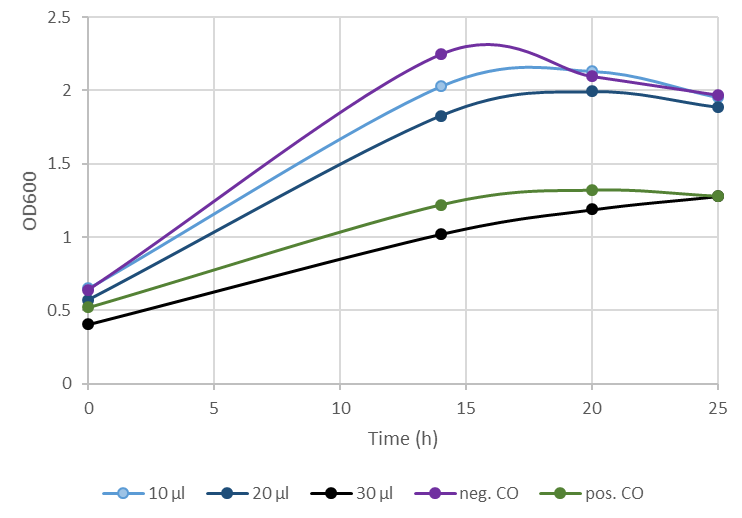|
|
| Line 3: |
Line 3: |
| | | | |
| | <header class="post-header"> | | <header class="post-header"> |
| − | <h1 class="post-title">Team: Collaborations</h1> | + | <h1 class="post-title">Collaborations</h1> |
| | </header> | | </header> |
| | | | |
| | <section class="post-content"> | | <section class="post-content"> |
| − | <h2 id="collaborations">Collaborations</h2> | + | <p>Collaborations and the exchange of ideas are the lifeblood of the scientific community and we’ve found the perfect partner in our path towards developing a new treatment option for patients with chronic wounds. </p> |
| | | | |
| − | <h4 id="sdu">SDU</h4> | + | <h2 id="sdu">SDU</h2> |
| | | | |
| − | <p>Collaborations and the exchange of ideas are the lifeblood of the scientific community and we’ve found the perfect partner in our path towards developing a new treatment option for patients with chronic wounds. <br> | + | <p>We got to know the SDU team (University of Southern Denmark) while hosting the Nordic iGEM Conference, NiC, and both teams were stunned to hear about how similar our projects were - both of us were aiming to develop spider-silk-based wound dressings! There and then, we decided that a collaboration would be a great idea and would let us benefit from each others' expertise. <br> |
| − | We got to know the SDU team while hosting the Nordic iGEM Conference, NiC, and both teams were stunned to hear about how similar our projects were - both of them were aiming to develop spider-silk-based wound dressings! There and then, we decided that a collaboration would be a great idea and would let us benefit from each others' expertise. <br> | + | |
| | Go have a look at SDU’s great project <a href="https://2016.igem.org/Team:SDU-Denmark/Collaborations">here</a> or go straight to their <a href="https://2016.igem.org/Team:SDU-Denmark/Demonstrate">results page</a> to see the fruits of our collaboration </p> | | Go have a look at SDU’s great project <a href="https://2016.igem.org/Team:SDU-Denmark/Collaborations">here</a> or go straight to their <a href="https://2016.igem.org/Team:SDU-Denmark/Demonstrate">results page</a> to see the fruits of our collaboration </p> |
| | | | |
| − | <p></html>[[File:T--Stockholm--2016-10-SDU.JPG|link=]]<html></p> | + | <p></html>[[File:T--Stockholm--2016-10-SDU-3.JPG|link=]]<html></p> |
| | | | |
| | <p>SDU presenting their Bacto-Aid project at NiC</p> | | <p>SDU presenting their Bacto-Aid project at NiC</p> |
| Line 21: |
Line 20: |
| | <h6 id="anambitiousplan">An Ambitious Plan</h6> | | <h6 id="anambitiousplan">An Ambitious Plan</h6> |
| | | | |
| − | <p>In the beginning of the summer, we discussed three possible ways of collaborating. Our team was very interested in working with SDU-produced spider silk that would allow us to use classical genetic engineering method to produce fusion proteins instead of relying on enzymatic conjugation. We on the other hand had a reliant setup for studying BSL-II organisms in our labs and would be able to help characterise SDU’s bactericides on a variety of organisms they wanted to target in their project. And lastly, if our teams actually ended up with finished products we were of course thinking of testing each other's wound dressings.</p> | + | <p>In the beginning of the summer, we discussed three possible ways of collaborating. Our team was very interested in working with SDU-produced spider silk that would allow us to use classical genetic engineering methods to produce fusion proteins instead of relying on enzymatic conjugation. We on the other hand had a reliant setup for studying BSL-II organisms in our labs and would be able to help characterize SDU’s bactericides on a variety of organisms they wanted to target in their project. And lastly, if our teams actually ended up with finished products we were of course thinking of testing each other's wound dressings.</p> |
| | | | |
| | <h6 id="amoredowntoearthapproach">A More Down-To-Earth Approach</h6> | | <h6 id="amoredowntoearthapproach">A More Down-To-Earth Approach</h6> |
| | | | |
| − | <p>Unfortunately, lab projects do not always proceed as planned and we were forced to focus on putting one of our collaboration ideas into practise - iGEM Stockholm characterising and testing SDU’s six bactericides: Laterosporulin, Thuricin S, Lacticin Q, Laterosporulin-Thuricin S hybrid, Lacticin Z - Lacticin Q hybrid, Pyocin S</p> | + | <p>Unfortunately, lab projects do not always proceed as planned and we were forced to focus on putting one of our collaboration ideas into practise - iGEM Stockholm characterizing and testing SDU’s six bactericides: Laterosporulin, Thuricin S, Lacticin Q, Laterosporulin-Thuricin S hybrid, Lacticin Z - Lacticin Q hybrid, Pyocin S</p> |
| | | | |
| | <p>We tested their activity on three different bacteria; <em>Staphylococcus aureus</em>, <em>Pseudomonas aeruginosa</em>.and <em>Enterobacter cloacae</em>, all of which are commonly found in wound infections <a class="ref" href="#wounds">[1]</a><a class="ref" href="#wounds2">[2]</a> <br> | | <p>We tested their activity on three different bacteria; <em>Staphylococcus aureus</em>, <em>Pseudomonas aeruginosa</em>.and <em>Enterobacter cloacae</em>, all of which are commonly found in wound infections <a class="ref" href="#wounds">[1]</a><a class="ref" href="#wounds2">[2]</a> <br> |
| − | The set up for the bactericide tests was fairly simple - different amounts of cell lysates were added to bacterial cultures and analysed at various time points to detect changes in bacterial density</p> | + | The set up for the bactericide tests was fairly simple - different amounts of cell lysates were added to bacterial cultures and analysed at various time points to detect changes in bacterial density.</p> |
| | | | |
| | <p></html>[[File:T--Stockholm--2016-10-SDU-graph.png|link=]]<html></p> | | <p></html>[[File:T--Stockholm--2016-10-SDU-graph.png|link=]]<html></p> |
| | | | |
| − | <p>Depicting a possible bacteriolytic action of Pyocin S on <em>P.aeruginosa</em> after addition of various amounts of cell lysates to bacterial cultures</p> | + | <p>Depicting a possible bacteriolytic action of Pyocin S on <em>P.aeruginosa</em> after addition of soluble fractions from cell lysates to bacterial cultures</p> |
| | | | |
| − | <p>The success of those experiment varied - with some of the proteins we were able to identify what might be a bactericidal effect but a higher level of expression and purification steps would be needed to achieved more significant results. This is the path SDU followed in their own project, where they were able to demonstrate considerable bacteriolytic effect with their purified proteins.</p> | + | <p>The success of those experiment varied - with some of the proteins we were able to identify what might be a bactericidal effect but a higher level of expression and purification steps would be needed to achieve more significant results. This is the path SDU followed in their own project, where they were able to demonstrate considerable bacteriolytic effect with their purified proteins.</p> |
| | | | |
| | <h6 id="timewellspent">Time Well Spent</h6> | | <h6 id="timewellspent">Time Well Spent</h6> |
| | | | |
| − | <p>Our collaboration proved beneficial for both teams - it allowed SDU to see how their proteins performed with different strains and species of bacteria in Stockholm’s labs and our team on the other hand had the opportunity to optimise our setup testing bacteriolytic and bacteriostatic activities. And most importantly it gave us all the opportunity to share the frustrations, joy and ‘aha’ moments that come with iGEM projects.</p> | + | <p>Our collaboration proved beneficial for both teams - it allowed SDU to see how their proteins performed with different strains and species of bacteria in Stockholm’s labs and our team on the other hand had the opportunity to optimize our setup testing bacteriolytic and bacteriostatic activities. And most importantly it gave us all the opportunity to share the frustrations, joy and ‘aha’ moments that come with iGEM projects.</p> |
| | | | |
| | <h6 id="references">References</h6> | | <h6 id="references">References</h6> |




